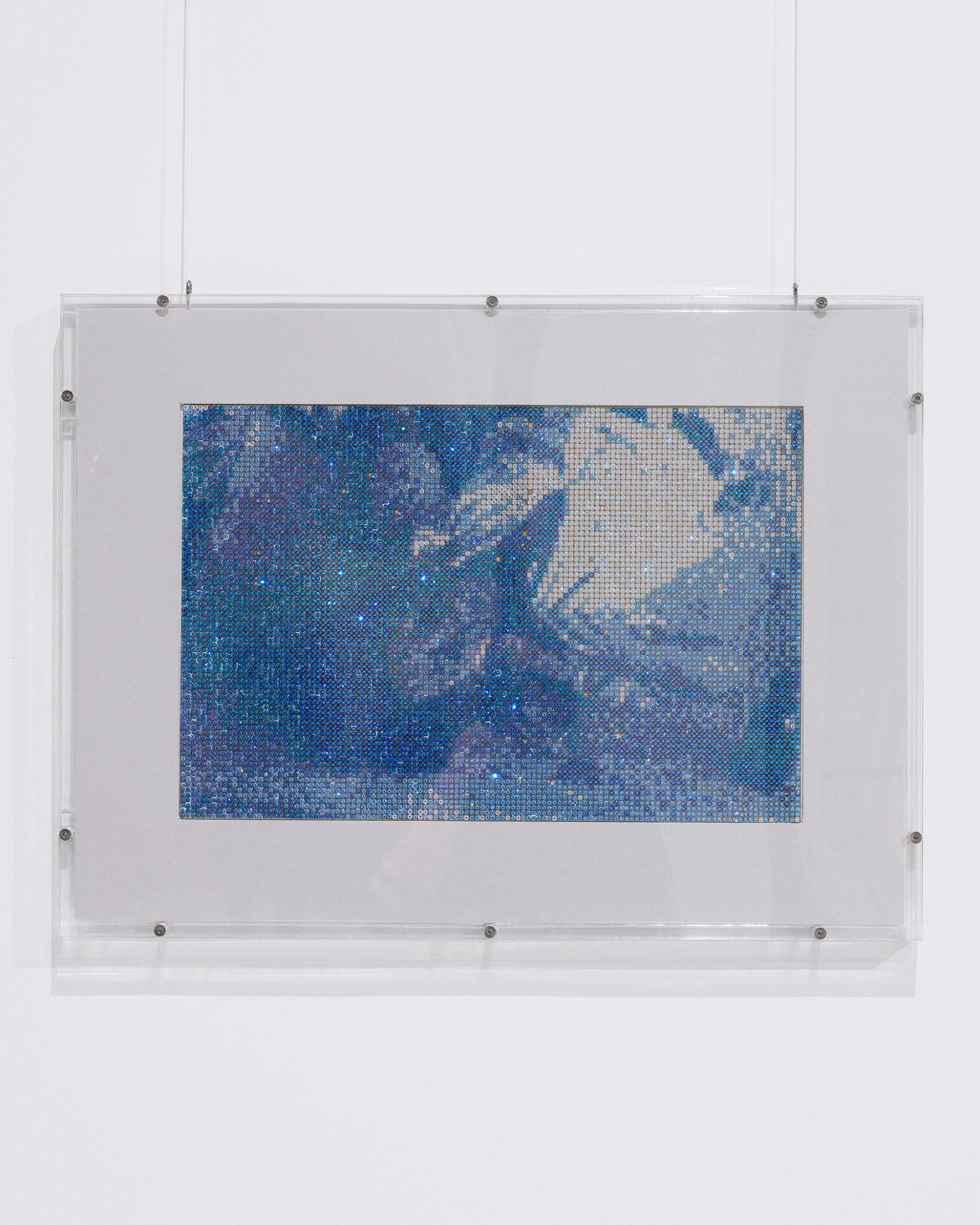by ASATO IKEDA


Abstract: This is a conversation between Japanese artist Mio Okido and art historian Asato Ikeda, centered on Okido’s exhibition Remembered Images Imagined (Hi)stories—Japan, East Asia, and I at the Museum of Asian Art in Berlin. The dialogue examines Okido’s exploration of imperialism, nationalism, and cultural identity through works such as Ghosts, Holy Person from Hiroshima, and Viewing. Okido discusses her critical engagement with historical narratives, aesthetics as propaganda, and the systemic frameworks shaping art and memory.
Mio Okido (b. 1986) is a contemporary Japanese artist who lives and works in Berlin.1 She earned a Bachelor of Arts degree from Tokyo University of the Arts and a Master of Arts degree from Berlin University of the Arts. Her work explores conflicts between people, particularly those arising from differences in social class, ideology, nationality, and cultural and political identity. She employs a variety of media and techniques, including two-dimensional art, installation art, and action pieces. Most recently, her works were featured in Remembered Images Imagined (Hi)stories—Japan, East Asia, and I at the Museum of Asian Art in Berlin, part of the Humboldt Forum. This exhibition, which ran from September 2024 to February 2025, was the artist’s first institutional solo exhibition. It took place in one of the semi-permanent galleries of Japanese and other Asian art.
Ikeda: How long have you been living in Germany, and why Germany?
Okido: I briefly studied in Germany in 2013 while still affiliated with Tokyo University of the Arts, but I returned to Japan afterward. I moved to Berlin more permanently in 2015. My primary interest was in understanding how postwar German history differed from that of Japan. During the Cold War, Germany was divided into two spheres—Western capitalist and Eastern communist—while Japan was not. I come from Sado Island in Niigata Prefecture, which is geographically close to Russia. My grandfather, who was stationed in China as a soldier during the war and later sent to Siberia as a prisoner of war, spent some time in Russia. Despite this physical proximity, Japan has been diplomatically and culturally distant from Russia on the official level, which has always felt like a “black box” to me. I found that very intriguing, and Germany’s unique relationship with Russia was one of the reasons I chose to live there.
Ikeda: I’d like to ask about the works currently displayed at the Museum of Asian Art in Berlin, particularly those related to Japan and the Second World War. Could you first talk about how the exhibition came about?
Okido: The exhibition was curated by Kerstin Pinther (curator for modern and contemporary art in a global context) and Alexander Hofmann (curator for arts of Japan).2 In 2023, I became a fellowship holder for the project Collaborative Museum at the Ethnological Museum of Berlin and the Museum of Asian Art, both of which are located at the Humboldt Forum in Mitte. These museums house over 500,000 objects, making them one of Europe’s largest collections of non-European art and culture.
The Humboldt Forum and its authoritative presence in central Berlin have been a focal point of critical debate about decolonization. The museums launched this project to collaborate with contemporary artists who are critical of the state’s colonial legacy, reframing the collection to challenge colonial structures and existing power dynamics. The aim is to promote diversity, accessibility, and a reimagined relationship with the collection, even though the content of the collection itself cannot be changed easily.
APJJF for more
